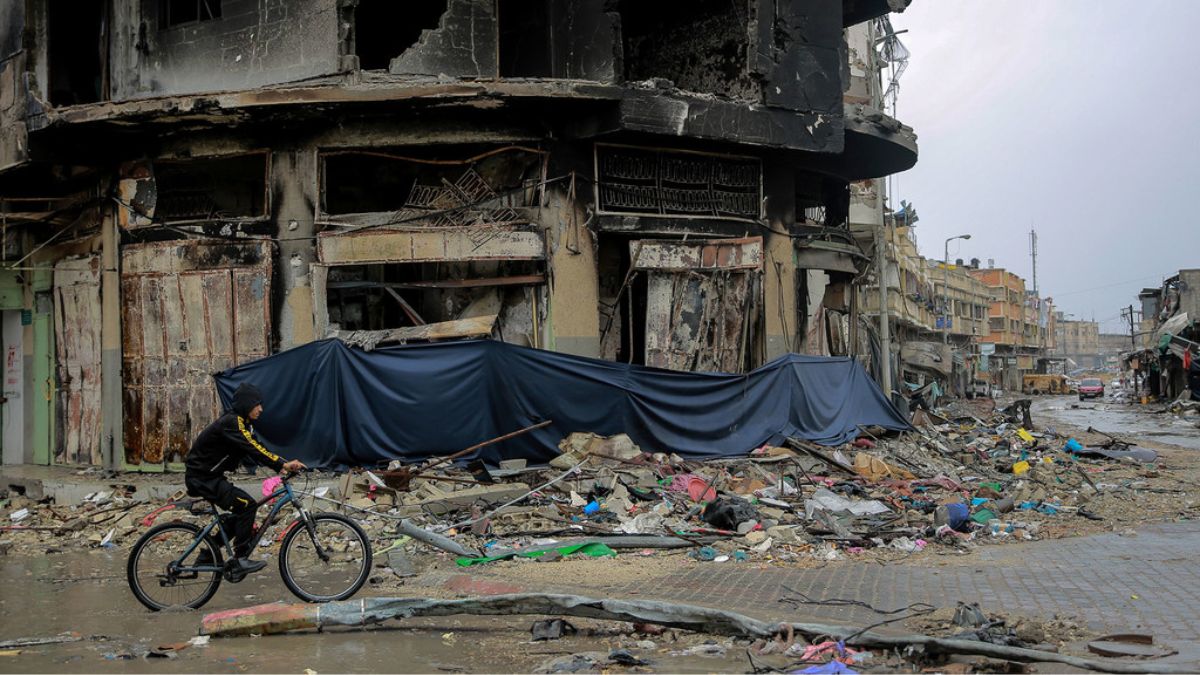 Credits: UN News
Credits: UN News
The humanitarian situation in northern Gaza has reached a critical point, with the Norwegian Refugee Council (NRC) reporting that all hospitals in the region have been either damaged or destroyed. This devastating development has left small clinics to handle medical cases, but these facilities are severely underequipped and unable to provide the necessary services or medications. The lack of fuel has forced the injured to be transported by donkey carts, a stark illustration of the dire conditions on the ground.
Salma Altaweel, NRC’s support manager in Gaza City, highlighted the severe challenges faced by Palestinians in this area. According to Altaweel, the residents have endured two major famine-like scenarios: the first during the siege in Ramadan and the second being the current crisis. She described the limited aid reaching the area, noting the absence of vegetables, fruits, or meat. “If we are lucky, we get two meals a day. For breakfast, tea, one piece of bread, and zaatar without any oil, and for dinner, tinned food,” she explained in a statement.
Altaweel’s account paints a grim picture of life in northern Gaza. The scarcity of food and basic supplies has led to desperate situations. She recounted witnessing stampedes around the only two aid trucks that have arrived in weeks, with children unable to stand or walk due to malnutrition, and the visible wasting among children.
The economic situation is equally dire. Prices for goods, when available, are exorbitant and beyond the reach of most residents. She mentioned that one egg costs $2.20, a kilo (2.2 pounds) of onions is $55, and cooking gas is priced at $41 per liter. Altaweel stated that the economy and commerce are dead, and cash liquidity is non-existent. The collapse of essential services has compounded the crisis, with water treatment stations inoperative, sewage water flooding streets, and garbage accumulating everywhere. Diseases such as hepatitis A are spreading rapidly, with no medicine or food to aid recovery.
The conflict in Gaza has deep historical roots, stemming from longstanding territorial disputes and political tensions between Israel and Palestinian groups. The current escalation began with intense clashes in Jerusalem, spreading to Gaza where Hamas, the ruling authority in Gaza, and other militant groups fired rockets into Israel. Israel responded with airstrikes, leading to widespread destruction and casualties in Gaza.
The ongoing blockade imposed by Israel and Egypt has severely restricted the flow of goods, including humanitarian aid, exacerbating the humanitarian crisis. International efforts to broker a ceasefire have so far failed to produce a lasting solution, leaving the civilian population in Gaza to bear the brunt of the violence and deprivation.
Altaweel’s description of the environmental conditions further underscores the severity of the crisis. She emphasized the public health risks associated with the collapse of infrastructure and essential services, stating that wherever one goes, toxic smoke is in the air.
